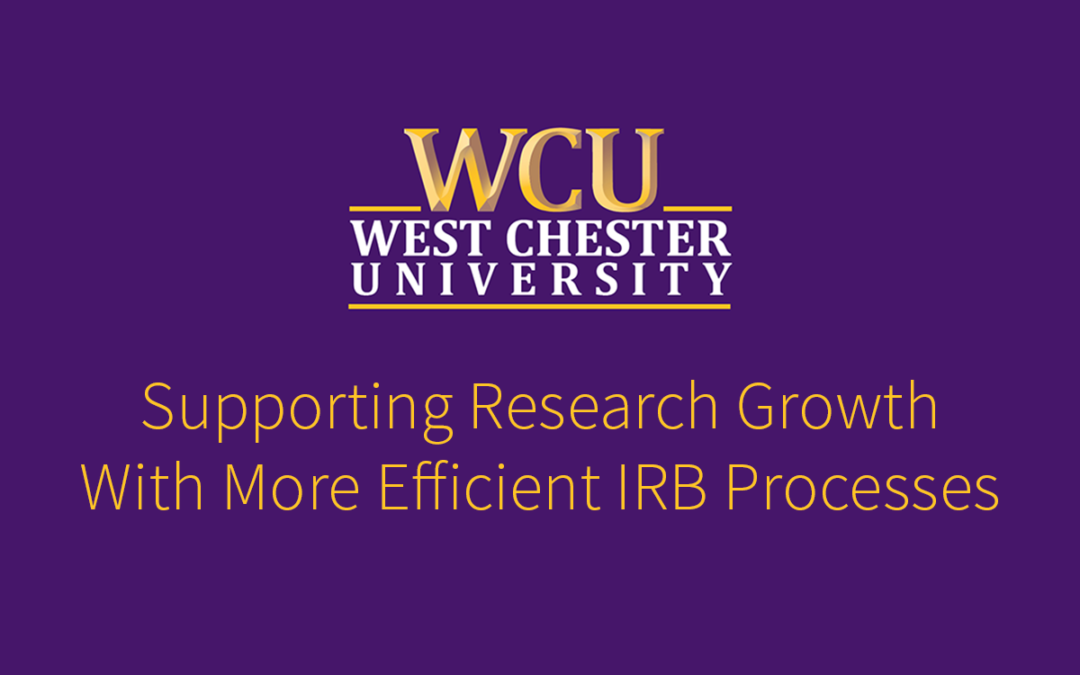Guest post by Nicole Bennett, Vice Provost for Research and Creative Activity, West Chester University
A growing research program
I may be biased, but I think the researchers here at West Chester University are pretty amazing. They’ve recently studied everything from the potential of flatworms in pharmacology to rural access to opioid addiction treatment and how plants defend themselves. It’s our job at the Office of Research & Sponsored Programs to help them find funding, develop and submit proposals and budgets, identify collaborators, and monitor compliance.
Every year, our committees review up to 500 protocols (including 100 to 200 from students), we submit about 100 proposals, and we receive about 70 awards. Our grant funding has doubled over the past couple years, which is fantastic—but it means more administrative burden. As our research program has grown, so has my office’s workload. We needed to drive more efficiency, but we weren’t sure how.
If your research program has ambitious goals, you’ve probably wondered this too: where do you focus first to make the biggest impact?
The challenge: gaining control over our IRB processes
We knew that the first step toward efficiency was to assess our current situation. We brought in a consultant from NCURA to evaluate our compliance procedures and identify areas for improvement. One major area of opportunity was our IRB processes, which were extremely complex—literally painful to watch. My administrative assistant walked me through how she monitored and followed up on IRB protocols, and after 30 minutes of seeing these convoluted, manual steps, my stomach hurt. Emailing back and forth about protocols took 70% of her time!
Searching for an IRB software solution
It was clear that we needed a better system in order to simplify things and save time. We assembled a team to evaluate our options: two graduate assistants, two IRB co-chairs, my administrative assistant, and me. We started gathering information, and I consulted peers throughout the Pennsylvania University State System of Higher Education including the Indiana University of Pennsylvania and Bloomsburg University. At my previous institution, Appalachian State University, we reviewed Cayuse software, so I knew it was a strong contender.
We assessed several vendors including IRB Manager and Human Ethics. Our goal was simple: make it as fast and easy as possible for everyone on the research team to manage this process in support of all the growing research at our university. In the end, the team found Cayuse to be the most intuitive, with excellent reporting capabilities that we didn’t have to pay extra for. Not only was Cayuse the best platform we looked at, but it was also the most affordable: a win-win!
My advice to other research offices
For anyone looking for a solution to improve their IRB processes, I would say, evaluate your options not only on price (look carefully for extra fees!) but also on the features you need. Elements such as auto-generated meeting minutes, automatic reminders, and side-by-side version comparisons can really help speed up the protocol approval process. While it’s too soon to know exactly how much time Cayuse will be saving us, I know it will be a lot!

Nicole Bennett
Vice Provost for Research and Creative Activity
West Chester University of Pennsylvania
Connect with her on LinkedIn


